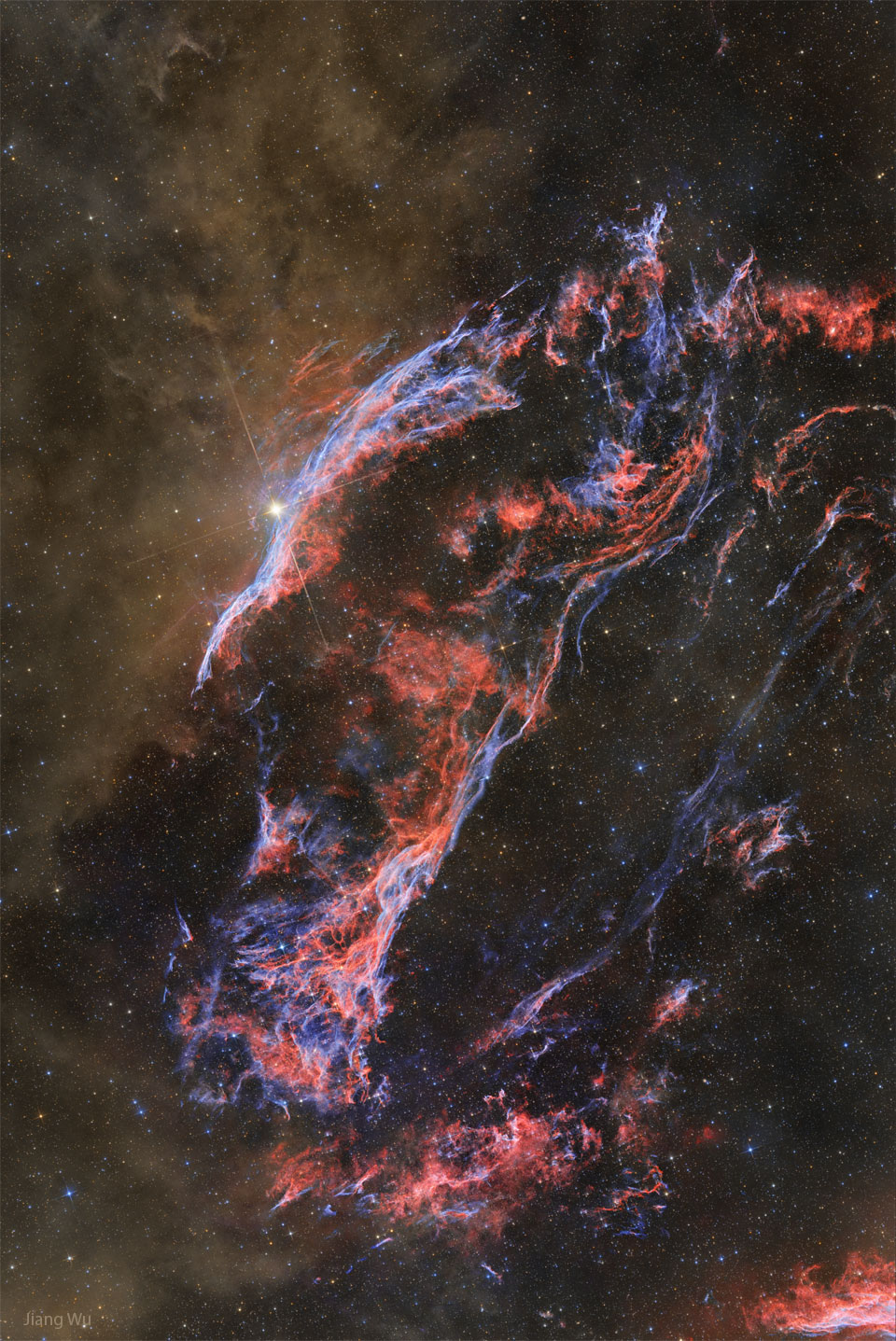2023年10月18日
Dust and the Western Veil Nebula
Image Credit & Copyright: Jiang Wu
Explanation: It’s so big it is easy to miss. The entire Veil Nebula spans six times the diameter of the full moon, but is so dim you need binoculars to see it. The nebula was created about 15,000 years ago when a star in the constellation of the Swan (Cygnus) exploded. The spectacular explosion would have appeared brighter than even Venus for a week – but there is no known record of it. Pictured is the western edge of the still-expanding gas cloud. Notable gas filaments include the Witch’s Broom Nebula on the upper left near the bright foreground star 52 Cygni, and Fleming’s Triangular Wisp (formerly known as Pickering’s Triangle) running diagonally up the image middle. What is rarely imaged — but seen in the featured long exposure across many color bands — is the reflecting brown dust that runs vertically up the image left, dust likely created in the cool atmospheres of massive stars.
Tomorrow’s picture: open space
尘埃与西面纱星云
影像提供与版权: Jiang Wu
说明: 它过于庞大反而很容易错过。整个面纱星云的直径是满月的6倍,不过非常昏暗,需要借助双筒望远镜才得见。这个星云大约形成于15,000年前,当时天鹅座的一颗恒星发生了爆炸。这例壮观爆炸于1星期之中应比金星还更明亮,只可惜未有任何已知的记录。上图所示为这团仍不停扩张的气体云之西缘。其中较著名的明亮丝缕状云气,有左上角邻近明亮前景恒星天鹅座52星的女巫帚星云,以及对角线中心附近的弗莱明三角星云(先前称为皮克林三角星云)。此外,还有以往鲜少拍摄到的、垂直分布于这幅由横跨数种色光的长曝光数据合成的影像左侧之棕色反射尘埃,而这些尘埃可能是形成于大质量恒星的低温大气里。
明日的图片: open space



